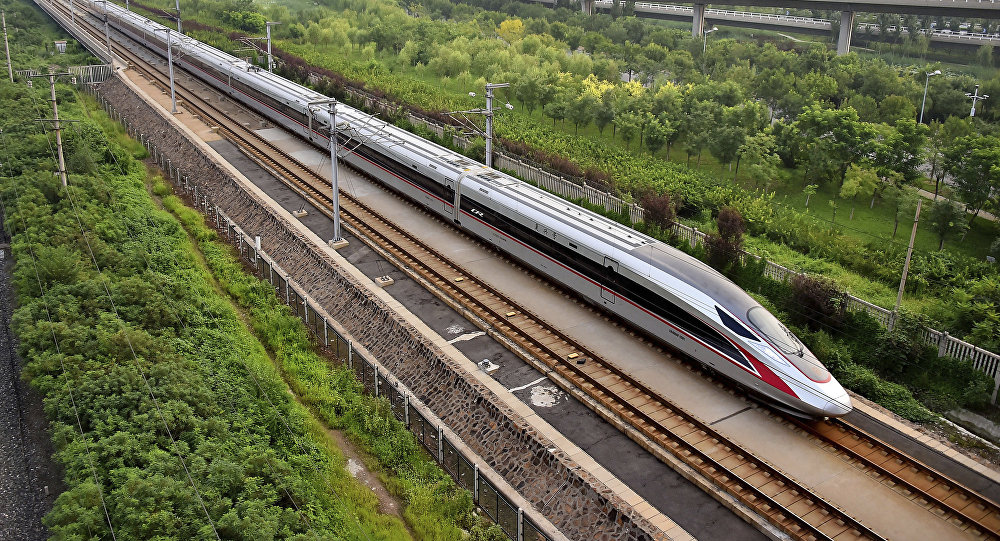Introduction
Indonesia, as one of the largest countries in Southeast Asia, is constantly striving to improve its transportation infrastructure to support sustainable economic growth and ease population mobility. One of the major infrastructure projects in the spotlight is the Jakarta-Bandung high-speed rail project. This project is expected to be an important milestone in efforts to accelerate mobility, reduce congestion, and open up new opportunities for Indonesia's economic growth. In this article, we take a closer look at the Jakarta-Bandung high-speed rail project, including its background, benefits, challenges, and impact on Indonesia's future.
Project Background
The discourse on the construction of the Jakarta-Bandung high-speed train first emerged in late 2008, but only gained real support in mid-2015. According to the Railway Technology website, the project is planned as the first high-speed rail project in Indonesia that will utilize high-speed rail technology that has proven successful in several developed countries such as Japan, France, and China. In its final form, the project will connect Jakarta's Manggarai train station with Bandung train station, traversing several cities and regions in West Java Province.
Objectives and Benefits of the Project

The Jakarta-Bandung high-speed rail project has the main objective of improving connectivity between the two main cities in West Java. Some of the expected benefits of this project are:
Travel Time Cut: One of the most prominent benefits of the project is the cut in travel time from Jakarta to Bandung. By using high-speed trains, the travel time that usually takes 3-4 hours by road can be cut to less than an hour. This will increase travel efficiency and productivity, especially for business people who frequently travel between the two cities.
Reducing Congestion: Jakarta and its surroundings often experience severe traffic congestion, especially during peak hours. With the high-speed train, a large portion of the population who want to travel between Jakarta and Bandung will probably switch to a faster and more efficient mode of transportation, reducing the burden on toll roads and other roads.
Increased Mobility and Tourism: Better connectivity between Jakarta and Bandung will boost the mobility of residents and tourists. With faster and more convenient travel, people will find it easier to access tourist attractions in both cities and beyond. This has the potential to boost the tourism sector and increase revenue from this industry.
Driving Economic Growth: The high-speed rail project will create new jobs during the construction and operational phases. In addition, more efficient movement of goods and people between the two main cities in West Java will open up new investment opportunities and drive the economy faster.
Project Plans and Progress
The Jakarta-Bandung high-speed rail project is planned to run in several stages. In the initial phase, the high-speed rail line will connect Manggarai train station in Jakarta with Bandung train station, via Cikarang, Karawang, and Purwakarta. Furthermore, there will be development and expansion of the line to cover other areas in West Java, such as Cirebon and Sukabumi.
Initially, the project was initiated by a consortium of several private companies, which later received support from the Indonesian government. A number of large companies, both domestic and foreign, are involved in the project by taking roles in the funding, design, construction and operation of the high-speed train.
Reporting from viva.co.id, the progress of the Jakarta Banduung High Speed Train has reached 85%. Currently, the Jakarta-Bandung high-speed rail project has entered the construction phase. The construction of tracks, stations, and other supporting facilities is underway, although some challenges must still be overcome to keep the project schedule on target.
Project Challenges

The Jakarta-Bandung high-speed rail project cannot be separated from various challenges that must be overcome by stakeholders. Some of the main challenges that need to be faced include:
Licenses and Regulations: Facing an infrastructure project of this size, various licenses and approvals from various related parties must be obtained. This can be time-consuming and slow down the project. Good coordination between the central and local governments and other stakeholders is key to avoid administrative obstacles that could potentially slow down the project.
Land Acquisition and Land Issues: High speed rail projects require a large amount of land for rail lines, stations, and other supporting facilities. However, land acquisition can be a complicated and time-consuming process. Landowners must be respected and compensated fairly, and in some cases, there may be conflicts with local communities who claim rights to the land. Resolving these land issues properly is key to maintaining social stability and project progress.
Finance and Investment: Infrastructure projects of the magnitude of the Jakarta-Bandung high-speed rail require substantial investment. Adequate sources of funding must be identified and secured for the project to proceed smoothly. The project involves both government and private sector participation, so it is important to attract investment and maintain funding sustainability during the various stages of the project.
Safety: High-speed rail is a speed-first means of transportation, and with that comes great responsibility in managing risk and maintaining safety. A high level of safety must be ensured in all aspects of the project, including construction, operations, and maintenance. An in-depth understanding of potential risks and appropriate preventive measures should be a top priority as reported by the website of the Ministry of Transportation of the Republic of Indonesia.
Technology: The use of the latest technology in high-speed rail systems is essential to achieve optimal reliability and performance. Technological challenges include aspects such as engine maintenance, signaling, and complex software. Assurance that the system can function properly and reliably is key to gaining the trust of the public and relevant stakeholders.
Role in Mobility and Environment: The Jakarta-Bandung high-speed rail project is expected to affect population mobility and reduce the number of private vehicles in circulation. However, it may also pose new challenges in mobility planning and management in both cities. Environmental impacts such as land conversion, environmental degradation, and sustainable energy use also need to be considered.
Tomps Project: Indonesia’s Project Management Solution
Tomps Project, as a digital project management platform, is ready to support infrastructure development projects in Indonesia. In the context of the Jakarta-Bandung high-speed rail project, Tomps can provide invaluable support in monitoring project progress in real-time. With its superior features, Tomps assists in more efficient budget planning as well as project progress monitoring using S-curves. Tomps Project excellence has also proven to increase project implementation efficiency by up to 2 times.
In an increasingly digital and fast-paced world, the adoption of technology in project management is key to achieving high efficiency and transparency. Tomps Project not only allows project stakeholders, including the government and contractors, to track project progress in real-time, but also helps in planning expenses more effectively and identifying potential risks. The S-curve feature of Tomps enables more accurate project monitoring, allowing project teams to take corrective action faster if there is a discrepancy between actual and planned progress.
Tomps' achievements in supporting project management are also reflected in the trust of more than 40,000 projects in Indonesia that have utilized the platform. This success shows that Tomps has proven its added value in supporting infrastructure development in the country. By giving project stakeholders access to collaborate more effectively, analyze data carefully, and make informed decisions, Tomps has helped steer infrastructure projects in a more efficient and successful direction.
In the context of large projects such as the Jakarta-Bandung high-speed rail, where proper coordination and management is critical, Tomps Project has been an invaluable tool. Not only does it address the complex challenges that may arise during the construction phase, but it also opens up opportunities to reap greater benefits of efficiency, transparency and quality in Indonesia's infrastructure development. With its continuous contribution, Tomps by Telkom Indonesia has proven itself as a reliable partner in realizing major projects that shape the future of the country. Learn more about Tomps at www.tomps.id.
References:
Kementerian Perhubungan Republik Indonesia. (2023). Uji Coba Kereta Cepat Jakarta-Bandung, Menhub Pastikan Aspek Keselamatan Terpenuhi Sebelum Beroperasi Kementerian Perhubungan Republik Indonesia. Dephub.go.id. https://dephub.go.id/post/read/uji-coba-kereta-cepat-jakarta-bandung,-menhub-pastikan-aspek-keselamatan-terpenuhi-sebelum-beroperasi
Praveen. (2022, September 2). Jakarta-Bandung High-Speed Railway, Indonesia. Railway Technology; Railway Technology. https://www.railway-technology.com/projects/jakarta-to-bandung-high-speed-rail/
Raden Jihad Akbar. (2022, August 5). KCIC Ungkap Proyek Kereta Cepat Jakarta-Bandung Sudah 85 Persen. Viva.co.id; VIVA. https://www.viva.co.id/berita/bisnis/1506098-kcic-ungkap-proyek-kereta-cepat-jakarta-bandung-sudah-85-persen







